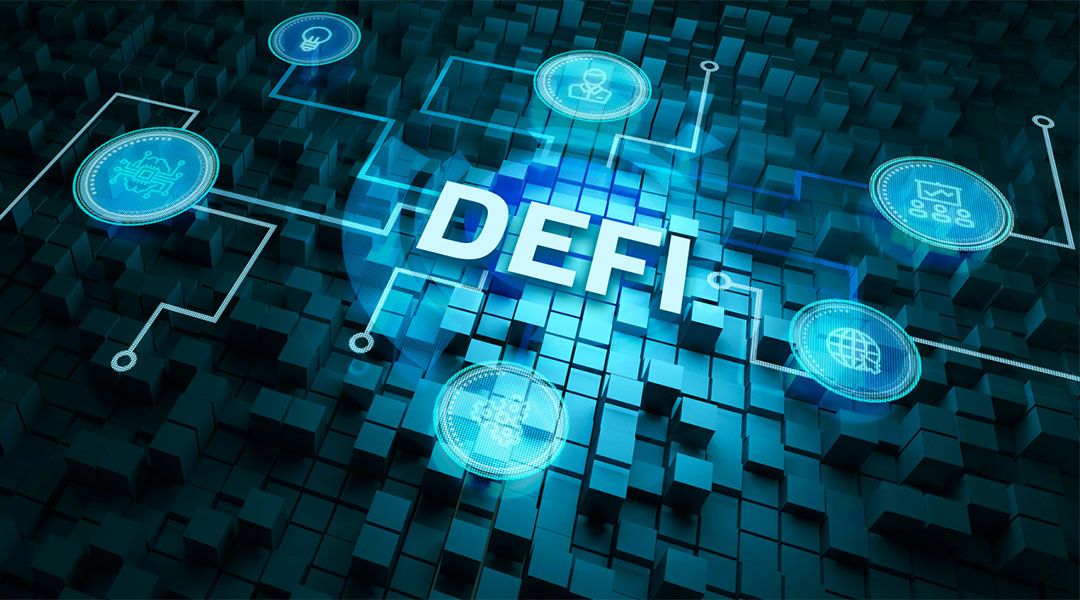Enterprise Blockchain Solutions: Seven Use Cases

With the development of distributed ledger technology now ten years in the making, slowly enterprises are exploring the possibilities of blockchain as well. While most of the blockchain startups working on innovative solutions focus on public and/or permissionless blockchains, enterprises will predominantly use private and/or permissioned blockchains.
The most important difference between a public and a private blockchain is that within a public blockchain, the actors involved in the network are not known, while in a private blockchain they are. As a result, within a public blockchain, trust within the system is created through game-theory incentives and cryptography. Anyone can join a particular public blockchain, simply by connecting his/her computer to the decentralised network, downloading the application, and starting to process transactions. It is not required to have a previous relationship with the ledger, and you do not need to be approved to join.
Private, or permissioned, blockchains, however, do not require such artificial incentives since all actors in the network are known to each other. New actors that want to join the network have to be approved by existing participants in the network. This enables more flexibility and efficiency of validating transactions. Private blockchains are generally used by organisations that like to keep a shared ledger for settlement of transactions, such as, for example, within the financial services industry. They are owned and operated by a group of organisations and transactions are visible only to members of the network.
With the technology advancing and more organisations seeing the benefits of a shared ledger among industry partners, more enterprise blockchain solutions are being developed. Of course, the financial services industry has been exploring blockchain for years, and many banks are experimenting with the technology. However, also other industries stand to benefit from blockchain. Many organisations are now experimenting with different Proof of Concepts to understand what blockchain means for their organisation. Let’s have a look at seven interesting use cases, that are not in the financial services industry, currently being developed:
7 Enterprise Blockchain Use Cases
1. Maersk: Streamlining and securing international shipments
Already in March 2017, the world’s largest shipping company developed their first Blockchain Proof of Concept. Together with the Dutch Customs and the US Homeland Security, they explored how Blockchain can be used to access cargo data remotely to speed up custom’s processes. The first test was built using IBM’s Hyperledger Fabric framework, and the objective was to streamline settlement of global trade transactions. According to a Maersk study in 2014, on average 30 people and organisations are involved in a shipment using a shipping container, resulting in over 200 interactions, each requiring separate documents. A clear case for distributed ledger technology to streamline this process.
Since then, Maersk has continued to develop their Blockchain expertise, and recently, they launched an IBM-Maersk blockchain platform for the global supply chain. The initiative, called TradeLens, has already grown to 92 participants, including 20 ports and various customs authorities. The platform has already streamlined 154 million shipping events and is growing at 1 million shipping events per day. Each participant within TradeLens has its own node that participates in the blockchain, enabling participants to cut out as many as five middlemen per transaction.
2. British Airways: Solving the flight information problem
In 2017, British Airways, together with three airports (London, Geneva and Miami) and SITA (an IT company focused on the airline industry), created a small Proof of Concept to test synchronising operational flight data across multiple stakeholders. The FlightChain project ensured that all stakeholders involved in the operation of a flight could use a single version of the truth of important flight data.
Within the test, each stakeholder in the network published their own data to the blockchain; for example, the departure airport published the departure gate, while the arriving airport published the arrival gate. In total, more than 2 million flight changes were processed and stored on a permissioned blockchain. Since everyone in the network has access to the same data, it allows for more streamlined processes.
The results of the FlightChain project were discussed in a SITA Report, also describing some key takeaways from the project. These include that every private-permissioned blockchain requires the right governance practices, industry standards and security requirements. Smart contracts will play an important role within a decentralised flight information ecosystem, and the performance, resilience and scalability of a private blockchain can be a useful tool to improve the air transport industry.
3. UPS: tracking global shipping data
Maersk is not the only shipping company that is looking at blockchain technology to improve its business processes. Another company is UPS, who have been streamlining their business processes with data and analytics for years. Already in 2017, UPS joined a transportation-focused blockchain consortium to develop blockchain standards for the freight industry and this year they filed a patent for the uses blockchain to track and trace sending packages across the globe. It is clear that UPS wants to play a key role in developing the global smart logistics network.
As with Maersk, UPS also understands that shipping logistics involved dozens of different stakeholders and numerous transactions. Making the data of these interactions immutable, verifiable and traceable will significantly increase efficiency in the global shipping industry. UPS aims to contribute by developing a system that routes packages autonomously through different logistic service providers and settle transactions among those stakeholders (nearly) instantly. Although it is still early days, such a decentralised system would contribute significantly to improving the global shipping industry.
4. Walmart: Tracking products from farm to plate
As discussed earlier, the digital-native organisation Walmart, who started using big data before anyone had heard of the term, is also one of the first to move into the Blockchain space. First, they experimented with Mango’s, to trace slices of mango to its origin, and Chinese Pork, to track the movements of it in China to prevent disease outbreaks linked to the food. Now, they have teamed up with eight other food giants and IBM to bring Blockchain to their food supply chains. This allows Walmart employees, and maybe soon also customers, to simply scan a product and immediately see the origin of the product and how it moved from farm to plate.
Blockchain will not only allow them to improve their data management systems and improve the efficiency within the supply chain but more importantly, it can help prevent infectious diseases becoming deadly by cutting down an investigation into food-borne illnesses from weeks to seconds. Once a source is known, action can be taken instantly, and that could significantly reduce the risks consumers face as recalls can be instigated faster
Of course, a giant such as Walmart could simply force all their suppliers to use a non-decentralised database, but blockchain technology offers a simpler and more secure process than barcodes, scanners and paper forms, according to Frank Yiannas, head of food safety at Walmart.
5. Shell and BP: developing oil trading platform
The oil giants Shell and BP are developing a blockchain-based digital platform for energy commodities trading. The consortium includes several other oil companies, trading houses and banks. The objective is to remove the need for using paper trading contracts and operations documentation and instead just smart contracts to govern energy transactions. Since the initiative was launched early 2018, the consortium has seen a lot of interest from the biggest players in the energy sector.
The objective of the private blockchain is to reduce the administrative burden of the participating organisation and make trading oil more efficient. In addition, making transactions immutable, verifiable and traceable should increase trust in the energy trading systems. Once the venture has received the necessary regulatory approvals, it will run as a separate entity.
6. Travelport: distributing tours and activities using blockchain
Travelport is a global travel platform providing distribution, technology, payment and other services for the travel industry. Obviously, whenever a product is being distributed globally across multiple organisations, blockchain can be used to streamline those processes. Travelport is developing a Minimum Viable Product to understand how smart contracts can be used in distributing travel products across the supply chain. Since there are many different players involved in, for example, the distribution of hotel nights, there are a lot of efficiencies to gain for Travelport when using smart contracts to govern the distribution.
Travelport has created a partnership with IBM to more efficiently manage the different tours and activities offered through cruise ports or large hotel chains. With the system, it aims to provide the consumer with more transparency and to get rid of some of the fake reviews that are present on sites such as TripAdvisor. To do so, Travelport will require tour organisers to add their inventory to the blockchain and then have someone endorse that content. Endorsements can be done by organisations that are on a pre-approved list developed by Travelport. As a result, the tour will receive an immutable seal of approval and offering travellers more security when booking a tour.
In addition, Travelport is looking into using smart contracts to settle transactions and payment of commissions automatically. Whenever a sale takes place, the smart contract would ensure that every stakeholder receives their share instantly, in local fiat money depending on their location. Travelport is betting heavily on blockchain, and they released a white paper with the different possibilities blockchain technology offers for Travelport.
7. Save the Children: developing a humanitarian blockchain
As we have discussed already in our new book Blockchain: Transforming Your Business and Our World, blockchain technology is not only applicable to commercial enterprises that want to make their supply chains more efficient. Increasingly, also not-for-profit organisations are seeing the benefits of blockchain how it could help their organisation in their objective to improve our world.
The charity Save the Children is currently exploring a Proof of Concept to help verify volunteers in the field. This ‘humanitarian passport’ could help the organisation verify new volunteers in times of distress when external people need to be deployed quickly and an extensive background check would take too much time. The system includes a pre-approved list of people, that have been vetted and whose skills are known. A blockchain-based system would be beneficial since the organisation consists of separate legal entities and having one database with immutable, verifiable and traceable information on volunteers can be immensely valuable in emergency situations.
Next to the humanitarian passport, Save the Children is also looking into other blockchain applications, such as improving processes for crowdfunding or using smart contracts to settle transactions with partners faster.
Final Thoughts
Although blockchain technology is still a nascent technology and the decentralised ecosystem is still being developed, many enterprises are experimenting with blockchain technology. For most of the enterprises, private and/or permissioned blockchains are the way to go since it generally only involves trusted industry partners. That also has a downside, because when developing a Proof of Concepts, it takes time to align all those industry partners. But, when the joint effort is made, it can offer a lot of benefits for the enterprises involved.
Image: Ico Maker/Shutterstock





